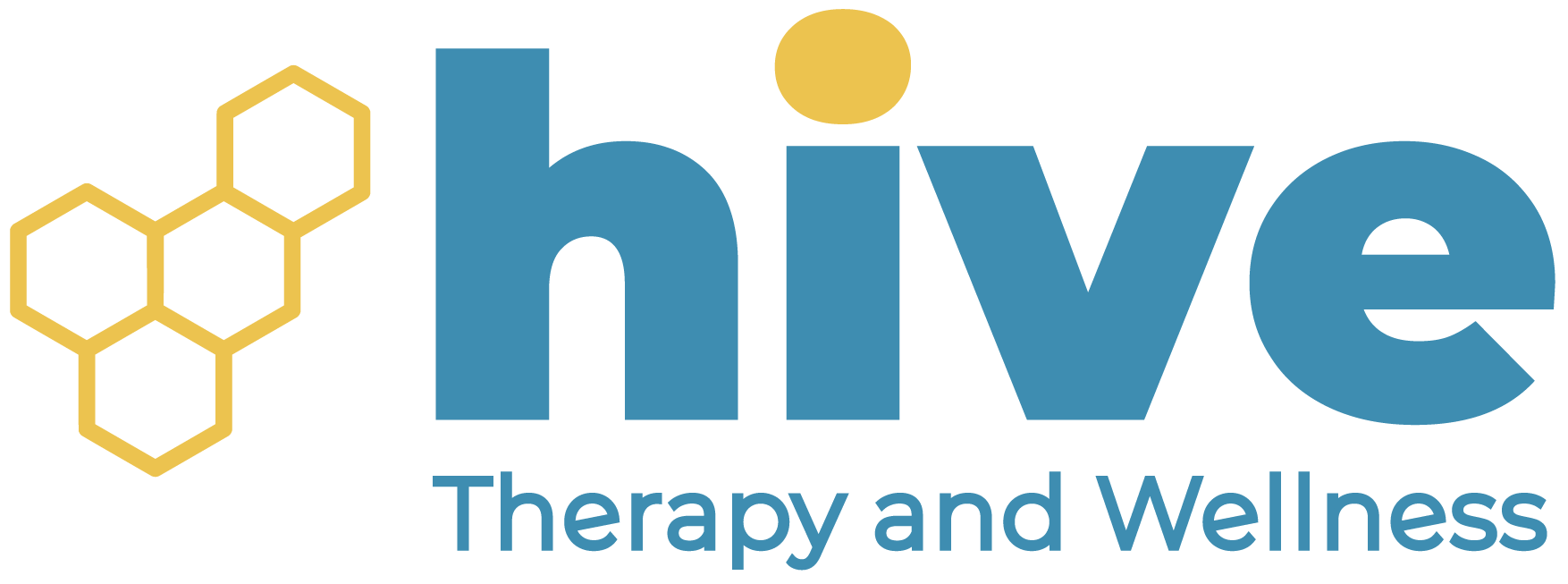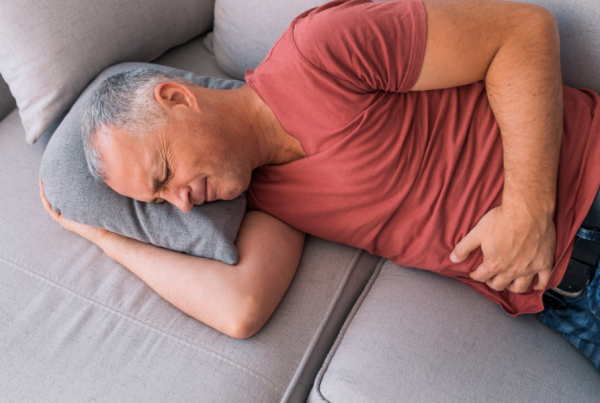Polycystic Ovary Syndrome (PCOS)
Move Better. Live Fuller. Your Wellness Journey Starts Here.
Schedule a FREE Discovery Call!
What Is Polycystic Ovary Syndrome (PCOS)?
Polycystic ovary syndrome (PCOS) is a hormonal or endocrine disorder that affects people who were born with a uterus and who are of reproductive age. This disorder, as the name implies, affects the ovaries—organs that produce eggs and hormones, which play a role in menstruation and pregnancy.
Before we jump into the specifics of how this condition works, let’s look at some common symptoms that are caused by the hormonal imbalances of PCOS:

- Irregular, infrequent, or prolonged menstrual cycles that are difficult to predict
- Heavy periods or light periods
- Heavier hair growth on the face, arms, chest, or abdomen
- Weight gain or trouble maintaining weight
- Acne on the face and body that may be more difficult to treat
- Dark patches on the skin
- Infertility
- Increased risk of pregnancy complications
- Enlarged ovaries
- Thinning hair on the scalp
- Sleep disturbances or disorders
- Mood swings, anxiety, and depression
- Increased risk of other health conditions such as diabetes, high blood pressure, and more
The reason we discussed symptoms first is because each person’s own experience with PCOS can vary widely—some individuals may not even have symptoms. For those who do, let’s talk about why…
Hyperandrogenism
Hyperandrogenism is an abundance of androgens (sex hormones) such as testosterone and androstenedione. Despite the nickname these hormones are often given, hormones like testosterone are produced in every body, regardless of the genitals you are born with. However, it is possible to have an imbalanced amount of androgens in the body.
Although PCOS varies from person to person, one of the most common identifiers of PCOS is hyperandrogenism. A high number of androgens is not only a characteristic of PCOS, but also a cause of the condition’s symptoms.
Androgens can be overproduced by the ovaries or by the adrenal glands (which sit on the kidneys). This overproduction of androgens is what creates scalp hair loss, bodily hair growth, weight gain, mood swings, and many other PCOS symptoms.
Insulin Resistance and Other Hormones
An overproduction of androgens can be accelerated in certain individuals with PCOS who have an insulin resistance. A resistance to the insulin hormone creates an overabundance of it, known as hyperinsulinemia.
While this may seem a bit confusing (you may be thinking: “How does a resistance cause an overabundance?”), it is actually simple. The body cannot use the insulin properly, and so the pancreas works harder to make more insulin to compensate for the lack of insulin usage.
Hyperinsulinemia causes ovaries to release even more androgens, which further contributes to the symptoms described above. Additionally, high testosterone can increase insulin resistance, too; meaning there is a bit of a cycle between insulin and testosterone that can perpetuate PCOS symptoms.
As you can see, these hormones are all very interconnected. It’s important to note that insulin and androgens are not the only hormones at play here—there’s also a pituitary hormone called the luteinizing hormone (LH). LH triggers the release of an egg from the ovaries (ovulation). It is partially responsible for the increase in androgens with PCOS, as LH is often imbalanced in these individuals and can cause symptoms such as irregular periods and infertility.
Last but not least, we have a protein that comes into play: the sex hormone-binding globulin (SHBG). This protein binds to androgens in the bloodstream, and helps to reduce their activity. An abundance of insulin can lower the amount of this protein, and therefore lowers the amount of androgens that can be controlled.
Ovulation in Those With PCOS
To understand some aspects of PCOS, you must understand ovulation. Ovulation involves the ovaries, two small glands of the reproductive system found in a person with a uterus. The ovaries are connected to the uterus via structures called fallopian tubes.
Your ovaries grow small fluid filled sacs, called follicles. Each month, a follicle from an ovary will grow bigger and mature, producing hormones like estrogen, progesterone, testosterone, and androstenedione. As the follicle matures, it eventually breaks open to release an egg in a process known as ovulation. This mature egg then travels down your fallopian tube and waits to be fertilized by sperm, which would result in pregnancy.
For people with PCOS, this mature egg may not be released or even developed as it usually would during the ovulation period, due to the individual’s hormonal imbalances. This lack of effective ovulation contributes to infertility.
Whether you have PCOS or not, if your ovary’s follicle does not produce an egg, it may become an ovarian cyst called a follicular cyst. Ovarian cysts are very normal, common, and usually not painful or harmful.
They can in some cases grow much bigger, which would make the ovarian cyst painful. People with PCOS may or may not experience these more painful cysts—it varies from person to person. Other people without PCOS can experience these cysts, painful or not.
The main difference is that a person with PCOS will have a lot more of these small follicular cysts on their ovaries, meaning they have polycystic ovaries. Polycystic ovaries are not usually painful, although having a lot of cysts may sound like something that would be painful. Even though polycystic ovaries do not directly cause pain, having many follicular cysts can actually cause other symptoms.
For example, although these follicles are not mature enough to release an egg, they can still produce hormones, further contributing to the overabundance of androgens in an individual with PCOS.
PCOS Is Different for Every Person
PCOS symptoms can differ greatly by the individual. Some people with this condition may not experience insulin resistance, nor increased levels of LH. This can make the symptoms very different from person to person, and can even make the condition unnoticeable for some. Some individuals may have their symptoms early once they start menstruation, or the symptoms may appear later during adulthood.
Because PCOS can vary widely, many individuals go undiagnosed. PCOS symptoms can overlap with many other conditions, making it easy to misdiagnose, too.
What Causes PCOS?
We’ve finished outlining how PCOS causes hormonal imbalances, and how hormonal imbalances can create many different PCOS symptoms. But what actually causes a person to have polycystic ovary syndrome?
Unfortunately, a direct cause isn’t known. However, there are some factors that are thought to contribute to the condition’s formation:
Genetics: PCOS typically runs in the family, meaning if you have a relative with PCOS, you may be more likely to have it, too.
Chronic inflammation: Inflammation is being studied in people with PCOS, as it is found to be common alongside the condition and can contribute to increased androgen production. Unfortunately, it can worsen hormonal imbalances including insulin resistance.
Environmental and lifestyle factors: Some lifestyle factors are thought to influence the severity of PCOS symptoms. This can include a poor diet, lack of exercise, and high level of stress.
Physical Therapy for PCOS
Unfortunately, there is no cure for polycystic ovary syndrome, and so most treatments focus on managing symptoms. Pelvic floor physical therapy can be a very effective form of management for a wide range of PCOS symptoms. While it may not be obvious, physical therapy can support individuals with PCOS by providing pain relief, improved muscle function, and supporting metabolic health. Here are some examples of how physical therapy treatment can improve the quality of life for those with PCOS:
Pain Management
PCOS can create symptoms of pain particularly in the pelvic region due to tightened pelvic floor muscles, painful periods, ovarian cysts, and hormonal fluctuations. Pelvic floor therapy can help manage this pain with manual therapy, which can release trigger points, relieve tension, and relax tight muscles. Manual therapy can take the form of many different treatments, including hands-on massage, cupping, dry needling, tissue scraping, and more.
Pelvic Floor Health
Due to hormonal fluctuations, many people with PCOS may experience pelvic floor dysfunctions that affect bladder and bowel function. To maintain bladder or bowel health, your physical therapist will work to optimize your pelvic floor health and function. This can involve strengthening exercises, muscle relaxation, and relearning how to effectively activate or contract the pelvic floor muscles.
Exercise Prescription
Exercise is highly recommended for managing PCOS symptoms. Physical therapists are experts in the musculoskeletal system, and can curate an exercise routine for your needs.
This can involve strengthening of the abdominals, hips, low back, and pelvic floor to relieve pelvic pain, as well as other strength training to regulate metabolism and increase insulin sensitivity. Cardio exercises are important to support cardiovascular health and weight management. Additionally, your physical therapist will incorporate stretches into your exercise routine to reduce stiffness and improve flexibility.
Relaxation Techniques
Physical therapists are knowledgeable about relaxation techniques such as deep breathing, which actually works to relax the pelvic floor muscles. In addition to relieving muscle tension, relaxation techniques can reduce stress and anxiety.
Managing Sexual Dysfunction
Hormonal imbalances can create sexual dysfunction or discomfort for individuals. Pelvic floor physical therapy can be a fantastic form of treatment in this case. Your physical therapist can encourage relaxation of the pelvic floor muscles that can improve sexual comfort, or in cases where the tissues are extremely sensitive, improve comfort through desensitization.
In addition to physical treatment, your physical therapist can provide education on at-home pelvic floor practice, suggest supportive aids or sexual aids, as well as what positions can provide more comfort during intercourse.
Behavioral Modifications
In order to further support a holistic management of your PCOS symptoms, your physical therapist will reduce harmful habits that may contribute to your symptoms. This can involve a range of activities depending on the individual. To alleviate pelvic pain, they may correct certain sitting or standing postures. For those with bladder or bowel symptoms, they can suggest dietary changes, fluid intake, toilet posture, or correct any harmful restroom habits.
In addition to these lifestyle changes, your physical therapist can collaborate with other health professionals such as nutritionists, gynecologists, or endocrinologists if necessary in order to support a comprehensive and holistic treatment experience.
The physical therapists at Hive Therapy and Wellness care about meeting your health goals and hearing your concerns—therefore, you can be confident that they will listen to your needs and work hard to provide you relief from PCOS symptoms. While under Hive’s care, you can expect a range of treatment methods to be utilized for your treatment, including any of the following:
- Neuromuscular re-education
- Manual therapy
- Exercise prescription
- Dry needling
- Cupping
- Tissue scraping
- Behavioral modifications
- Therapeutic activities
- Electrical muscle stimulation
- Spinal manipulation
- Therapeutic modalities
- Biofeedback
Polycystic ovary syndrome (PCOS) is a hormonal or endocrine disorder that affects people who were born with a uterus and who are of reproductive age.
This disorder, as the name implies, affects the ovaries—organs that produce eggs and hormones, which play a role in menstruation and pregnancy.
Before we jump into the specifics of how this condition works, let’s look at some common symptoms that are caused by the hormonal imbalances of PCOS:
- Irregular, infrequent, or prolonged menstrual cycles that are difficult to predict
- Heavy periods or light periods
- Heavier hair growth on the face, arms, chest, or abdomen
- Weight gain or trouble maintaining weight
- Acne on the face and body that may be more difficult to treat
- Dark patches on the skin
- Infertility
- Increased risk of pregnancy complications
- Enlarged ovaries
- Thinning hair on the scalp
- Sleep disturbances or disorders
- Mood swings, anxiety, and depression
- Increased risk of other health conditions such as diabetes, high blood pressure, and more
The reason we discussed symptoms first is because each person’s own experience with PCOS can vary widely—some individuals may not even have symptoms. For those who do, let’s talk about why…
Hyperandrogenism
Hyperandrogenism is an abundance of androgens (sex hormones) such as testosterone and androstenedione.
Despite the nickname these hormones are often given, hormones like testosterone are produced in every body, regardless of the genitals you are born with. However, it is possible to have an imbalanced amount of androgens in the body.
Although PCOS varies from person to person, one of the most common identifiers of PCOS is hyperandrogenism. A high number of androgens is not only a characteristic of PCOS, but also a cause of the condition’s symptoms.
Androgens can be overproduced by the ovaries or by the adrenal glands (which sit on the kidneys). This overproduction of androgens is what creates scalp hair loss, bodily hair growth, weight gain, mood swings, and many other PCOS symptoms.
Insulin Resistance and Other Hormones
An overproduction of androgens can be accelerated in certain individuals with PCOS who have an insulin resistance. A resistance to the insulin hormone creates an overabundance of it, known as hyperinsulinemia.
While this may seem a bit confusing (you may be thinking: “How does a resistance cause an overabundance?”), it is actually simple. The body cannot use the insulin properly, and so the pancreas works harder to make more insulin to compensate for the lack of insulin usage.
Hyperinsulinemia causes ovaries to release even more androgens, which further contributes to the symptoms described above.
Additionally, high testosterone can increase insulin resistance, too; meaning there is a bit of a cycle between insulin and testosterone that can perpetuate PCOS symptoms.
As you can see, these hormones are all very interconnected. It’s important to note that insulin and androgens are not the only hormones at play here—there’s also a pituitary hormone called the luteinizing hormone (LH). LH triggers the release of an egg from the ovaries (ovulation).
It is partially responsible for the increase in androgens with PCOS, as LH is often imbalanced in these individuals and can cause symptoms such as irregular periods and infertility.
Last but not least, we have a protein that comes into play: the sex hormone-binding globulin (SHBG). This protein binds to androgens in the bloodstream, and helps to reduce their activity.
An abundance of insulin can lower the amount of this protein, and therefore lowers the amount of androgens that can be controlled.
Ovulation in Those With PCOS
To understand some aspects of PCOS, you must understand ovulation. Ovulation involves the ovaries, two small glands of the reproductive system found in a person with a uterus. The ovaries are connected to the uterus via structures called fallopian tubes.
Your ovaries grow small fluid filled sacs, called follicles. Each month, a follicle from an ovary will grow bigger and mature, producing hormones like estrogen, progesterone, testosterone, and androstenedione.
As the follicle matures, it eventually breaks open to release an egg in a process known as ovulation. This mature egg then travels down your fallopian tube and waits to be fertilized by sperm, which would result in pregnancy.
For people with PCOS, this mature egg may not be released or even developed as it usually would during the ovulation period, due to the individual’s hormonal imbalances. This lack of effective ovulation contributes to infertility.
Whether you have PCOS or not, if your ovary’s follicle does not produce an egg, it may become an ovarian cyst called a follicular cyst. Ovarian cysts are very normal, common, and usually not painful or harmful.
They can in some cases grow much bigger, which would make the ovarian cyst painful. People with PCOS may or may not experience these more painful cysts—it varies from person to person. Other people without PCOS can experience these cysts, painful or not.
The main difference is that a person with PCOS will have a lot more of these small follicular cysts on their ovaries, meaning they have polycystic ovaries.
Polycystic ovaries are not usually painful, although having a lot of cysts may sound like something that would be painful. Even though polycystic ovaries do not directly cause pain, having many follicular cysts can actually cause other symptoms.
For example, although these follicles are not mature enough to release an egg, they can still produce hormones, further contributing to the overabundance of androgens in an individual with PCOS.
PCOS Is Different for Every Person
PCOS symptoms can differ greatly by the individual. Some people with this condition may not experience insulin resistance, nor increased levels of LH.
This can make the symptoms very different from person to person, and can even make the condition unnoticeable for some. Some individuals may have their symptoms early once they start menstruation, or the symptoms may appear later during adulthood.
Because PCOS can vary widely, many individuals go undiagnosed. PCOS symptoms can overlap with many other conditions, making it easy to misdiagnose, too.
We’ve finished outlining how PCOS causes hormonal imbalances, and how hormonal imbalances can create many different PCOS symptoms. But what actually causes a person to have polycystic ovary syndrome?
Unfortunately, a direct cause isn’t known. However, there are some factors that are thought to contribute to the condition’s formation:
Genetics: PCOS typically runs in the family, meaning if you have a relative with PCOS, you may be more likely to have it, too.
Chronic inflammation: Inflammation is being studied in people with PCOS, as it is found to be common alongside the condition and can contribute to increased androgen production. Unfortunately, it can worsen hormonal imbalances including insulin resistance.
Environmental and lifestyle factors: Some lifestyle factors are thought to influence the severity of PCOS symptoms. This can include a poor diet, lack of exercise, and high level of stress.
Unfortunately, there is no cure for polycystic ovary syndrome, and so most treatments focus on managing symptoms. Pelvic floor physical therapy can be a very effective form of management for a wide range of PCOS symptoms.
While it may not be obvious, physical therapy can support individuals with PCOS by providing pain relief, improved muscle function, and supporting metabolic health.
Here are some examples of how physical therapy treatment can improve the quality of life for those with PCOS:
Pain Management
PCOS can create symptoms of pain particularly in the pelvic region due to tightened pelvic floor muscles, painful periods, ovarian cysts, and hormonal fluctuations.
Pelvic floor therapy can help manage this pain with manual therapy, which can release trigger points, relieve tension, and relax tight muscles. Manual therapy can take the form of many different treatments, including hands-on massage, cupping, dry needling, tissue scraping, and more.
Pelvic Floor Health
Due to hormonal fluctuations, many people with PCOS may experience pelvic floor dysfunctions that affect bladder and bowel function.
To maintain bladder or bowel health, your physical therapist will work to optimize your pelvic floor health and function. This can involve strengthening exercises, muscle relaxation, and relearning how to effectively activate or contract the pelvic floor muscles.
Exercise Prescription
Exercise is highly recommended for managing PCOS symptoms. Physical therapists are experts in the musculoskeletal system, and can curate an exercise routine for your needs.
This can involve strengthening of the abdominals, hips, low back, and pelvic floor to relieve pelvic pain, as well as other strength training to regulate metabolism and increase insulin sensitivity.
Cardio exercises are important to support cardiovascular health and weight management. Additionally, your physical therapist will incorporate stretches into your exercise routine to reduce stiffness and improve flexibility.
Relaxation Techniques
Physical therapists are knowledgeable about relaxation techniques such as deep breathing, which actually works to relax the pelvic floor muscles. In addition to relieving muscle tension, relaxation techniques can reduce stress and anxiety.
Managing Sexual Dysfunction
Hormonal imbalances can create sexual dysfunction or discomfort for individuals. Pelvic floor physical therapy can be a fantastic form of treatment in this case.
Your physical therapist can encourage relaxation of the pelvic floor muscles that can improve sexual comfort, or in cases where the tissues are extremely sensitive, improve comfort through desensitization.
In addition to physical treatment, your physical therapist can provide education on at-home pelvic floor practice, suggest supportive aids or sexual aids, as well as what positions can provide more comfort during intercourse.
Behavioral Modifications
In order to further support a holistic management of your PCOS symptoms, your physical therapist will reduce harmful habits that may contribute to your symptoms.
This can involve a range of activities depending on the individual. To alleviate pelvic pain, they may correct certain sitting or standing postures.
For those with bladder or bowel symptoms, they can suggest dietary changes, fluid intake, toilet posture, or correct any harmful restroom habits.
In addition to these lifestyle changes, your physical therapist can collaborate with other health professionals such as nutritionists, gynecologists, or endocrinologists if necessary in order to support a comprehensive and holistic treatment experience.
The physical therapists at Hive Therapy and Wellness care about meeting your health goals and hearing your concerns—therefore, you can be confident that they will listen to your needs and work hard to provide you relief from PCOS symptoms.
While under Hive’s care, you can expect a range of treatment methods to be utilized for your treatment, including any of the following:
- Neuromuscular re-education
- Manual therapy
- Exercise prescription
- Dry needling
- Cupping
- Tissue scraping
- Behavioral modifications
- Therapeutic activities
- Electrical muscle stimulation
- Spinal manipulation
- Therapeutic modalities
- Biofeedback
You can learn more about these treatments on our Treatments Page.





